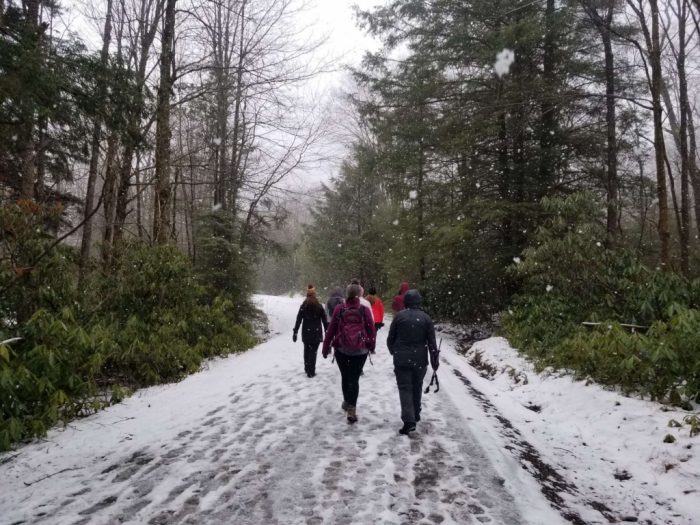How to Hike With Your Dog, According to Dog Parents
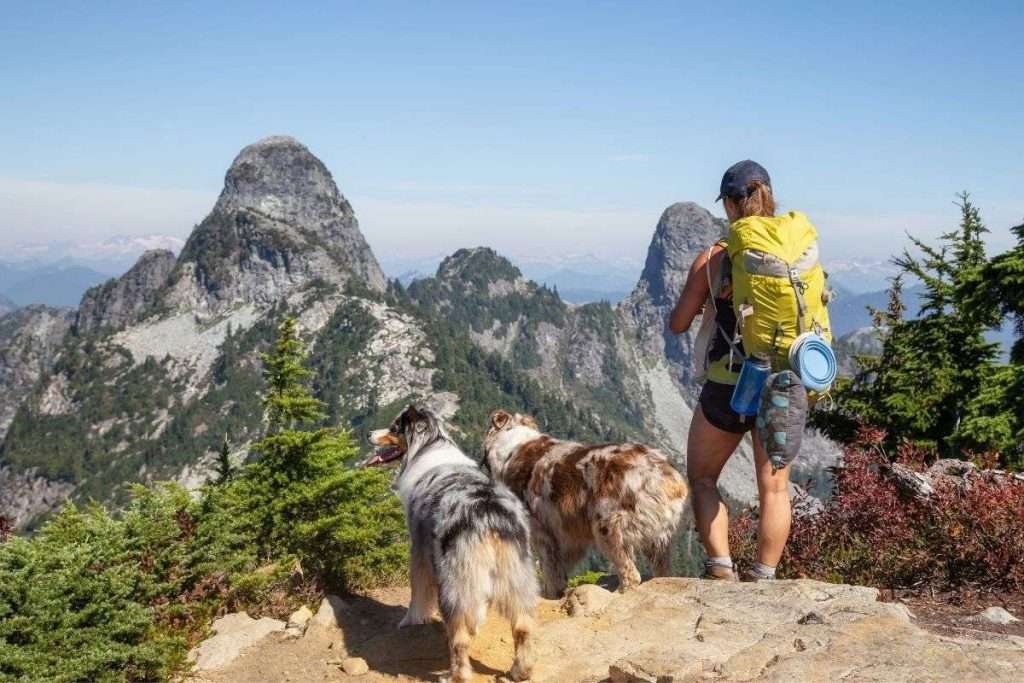
A hiking adventure is even more fun for pet parents if they can bring their furry friends with them. But it isn’t as cut and dry as just bringing your dog on an outdoor adventure! Of course, there are numerous things to consider from doggie hiking gear, finding dog friendly trails, and dealing with other animals, among other things.
Dog friendly hikes are more than just bringing the usual checklist of dog waste bags, extra water, dog treats, or even dog food. Dogs need to prepare by taking long walks or getting used to paw pads before taking on a hike in the mountains. If your dog has health problems like heart issues, hip dysplasia, or other illnesses it is probably better to stick to walks instead of a hike.
We asked other Explorer Chicks for tips to consider and prepare for when it comes to hiking with dogs.
8 Things to Consider When Hiking With Your Dog
National Park Rules to Follow
Submitted by Tawnya of Money Saved is Money Earned

Dogs are welcome in most National Parks and there is even a program for dogs and their humans to become B.A.R.K. rangers. However, there are certain rules to follow within the parks so that your furry friends and the environment and wildlife remain safe.
B.A.R.K. is an acronym that stands for: bag your pet’s waste, always leash your pet, respect wildlife, and know where you can go. These are the basic rules for visiting a National Park with your dog, but it’s important to know which parks allow dogs and where you can take your dog.
Check out the NPS site to learn which parks allow pets and what you need to know before you visit.
How to Deal with Wild Animals
Submitted by Tiffany of Pennies, Places, and Paws
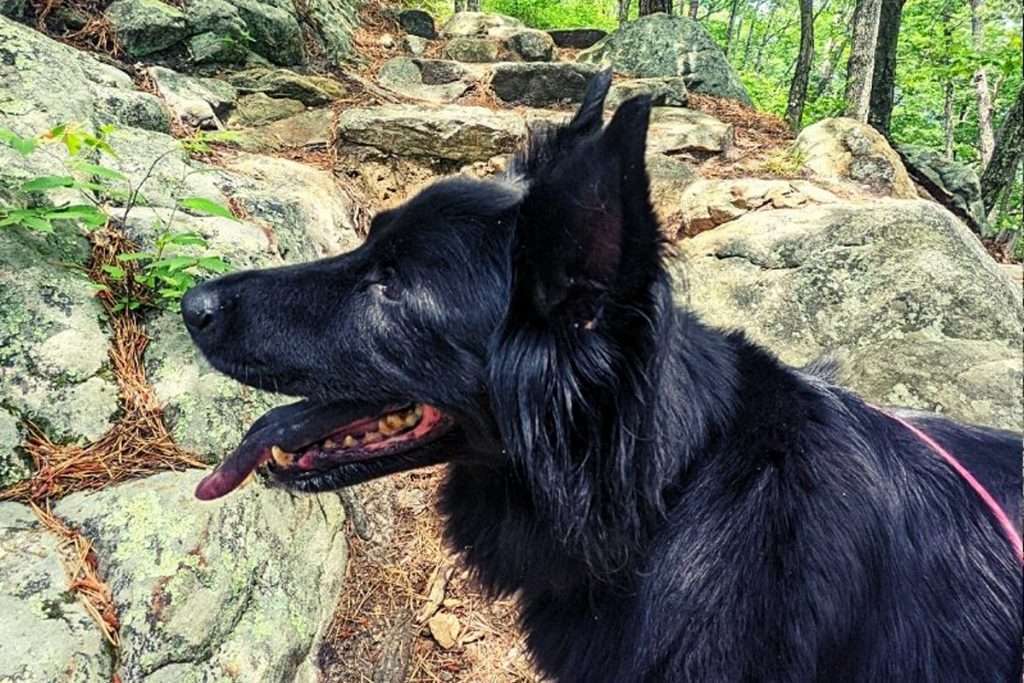
It is very important to be aware of which wild animals live in the area that you will be hiking or camping with your dog in so you will know what to watch out for and what precautions you should take. Even if it is allowed to let your dog off-leash, it might not be a good idea depending on several factors.
If your dog has a high prey drive or does not have a solid ‘leave it’ and ‘recall’ or ‘come’ command, you should keep your dog on a leash. A leashed dog is easier to keep safe. Keeping your dog on a leash will help prevent your dog from getting injured or lost in the excitement of finding wild animals or their scents on the trail. It is equally important to prevent and stop your dog from harassing any wildlife they may encounter to keep the wild animals healthy and safe.
Here are 3 quick tips depending on what animals may be found in the area:
- If the trails are home to venomous snakes or scorpions, you will want to make sure your pup isn’t digging under downed branches or small holes. These areas can be popular resting spots for these animals.
- In areas with alligators or crocodiles, be very careful around bodies of water even if it’s fenced off. Did you know gators can climb fences? They are surprisingly agile and fast.
- Keep your dog close and insight in places that have an abundance of larger predators like wolves, coyotes, and bears. This is especially important if you have a small dog.
Poisonous Plants to Watch Out For
Submitted by Melissa of New York Discovered

If you are an avid hiker and dog owner, naturally you are going to want to take your best friend along with you on your adventures! Safety, of course, is a priority when hiking with your dogs. Dogs like to run through and roll around in the wilderness, and every now and then you might even catch them munching on something. One thing to be on the lookout for is poisonous plants.
Plants that are toxic to dogs can cause a variety of health issues, including nausea, vomiting, liver or kidney failure, and in the worst case, death. So, on your next hike with your furry pal, be on the lookout for plants that may cause vomiting and diarrhea like foxglove, crocuses, lilies, daffodils, morning glories, and bluebells.
Some plants can lead to more serious effects, like seizures and death from some lilies, heart failure from foxglove, coma or paralysis from Ivy, or organ damage from Crocuses. Some plants, like foxtails, can embed into the skin and cause local irritation, so be sure to give your dog a full glance over after hiking to make sure nothing is there that shouldn’t be.
Plant species that are poisonous to dogs can also vary greatly depending on your destination, so it is always best to familiarize yourself with common plants that may be toxic in the area you are visiting and be on the lookout. But poisonous plants to humans, like poison ivy or poison oak, are also bad for your pup. As a general rule of thumb, stop your dog from munching on anything while on the trails.
Dealing with Heat Stroke
Submitted by Nina of Nina Out and About

Many people think the best time of year to hike with your dog is in the summer. While it’s lovely to take a summer hike, you have to remember that heat stroke can happen to dogs, just like it can to people. First, your dog will experience heat exhaustion – they will have a hard time breathing and will start looking for water. When your dog stops moving and is panting nonstop then they are experiencing heat stroke.
I have a golden retriever, who is more prone to heat stroke and hot spots than most dogs. After our first short hike together, I realized that I’d been woefully underprepared.
I was much more prepared for our next hike at the Cup and Saucer Trail.
Watch out for the signs of heat stroke:
· Excessive panting is a warning sign
· Dry or sticky gums
· Disorientation
· Lethargy
· In serious cases, seizures
Protect your dog by leaving them home on days that have heat risk warnings.
I always bring a lot of extra water – I’m talking 2L – just for my dog, even for a short hike. I plan for a couple of water breaks and use a portable dog water bowl so he can drink on the go.
You can buy cooling shirts to keep your dog chilled. The cooling bandanas are a waste in my opinion, but the vests that you can wring dry or pop in the fridge are a lifesaver!
Take breaks to allow your dog to cool down in the shade. Let them go swimming, pour some water on them, or use a hair salon mister (they work great for dogs!).
You may want to pack some electrolyte pupsicles in your cooler for after your hike.
Hiking with Dogs in Europe
Submitted by Morgan of Crave the Planet

Spending the day hiking with my Goldendoodle Ruby is possibly my favorite thing to do in this world. The second is eating delicious local food to replenish afterward. That is why I love hiking so much in Germany and Austria – I can do both!
Dogs are welcome in almost every hotel and dining establishment in Germany and Austria so I can always bring her along for my hiking trips in the Alps or through the Eifel forest. We’ve even done hut-to-hut stays in the Bavarian Alps, but finding huts that accept dogs can be challenging as it’s more difficult to clean in remote huts so it requires more planning.
What I’ve learned from hiking all over the Alps with Ruby is to always buy her a ticket when we use the gondolas to access the high elevation trails. The ticket is usually around 5-10 euros and not the full price we humans pay. If I use the train, I have to also buy her a child’s ticket for the train ride.
And while dogs are allowed in most restaurants, they are not allowed into any establishment with a buffet. So I avoid bringing her inside bakeries and leave her outside while I grab my morning croissant. When I take her inside a restaurant, I pack an extra waterproof jacket for her to lie on in order to ensure she doesn’t leave a mess on the floor with her dirty paws.
Trail Etiquette for Dogs
Submitted by Debbie from World Adventurists
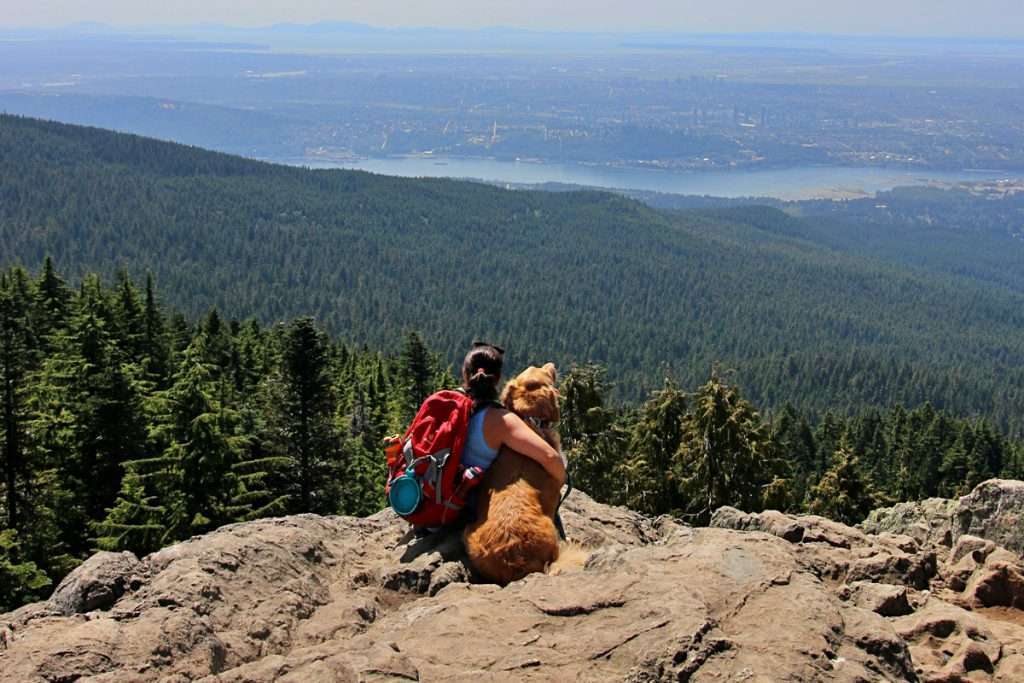
When you’re hiking with your furry best friend, you are responsible for his behavior, just like you are your own. This makes you responsible for the safety of those around you as they encounter your dog, and how your actions affect fellow hikers.
When we are on the trail with our dog Comet, we realize that we are an ambassador for hiking with dogs. If you add to bad etiquette, your actions could lead to additional trail closures or restrictions on hiking with dogs.
Ensure you give right-of-way to all other trail users, and step out of sniffing range. Step out of the way and have him sit on the far side of you until others have passed. This ensures that your dog will not lunge (even in excitement). If there is nowhere to step off the trail without damaging the environment, still pass others with your dog on the far side of you. If your dog is off-leash, ensure they are on a leash when passing other trail users. Always be polite and let those passing know if your dog is friendly or not. We have seen way too many instances where dog owners let their pup take off and do whatever it desires – and it causes so much chaos on trails.
If you are ever unsure of what to do, using common sense and courtesy will go a long way!
Leave No Trace
Submitted by Victoria of Guide Your Travel

Leave no trace is one of the most important concepts when exploring nature whether you’re hiking with a pet or not. As a responsible pet owner, you need to make sure your dog isn’t leaving behind anything in nature including dog poop.
It may not seem like a big deal to not pick it up since lots of animals go to the bathroom in the forest right? However, the leave no trace principle really means NO trace and includes any waste your dog might produce. Not only can it contain harmful bacteria but with lots of hikers using the same trails the amount of poop would simply become unbearable.
A fantastic solution is to invest in something like a poop vault which lets you carry any poop bags in a smell-proof container. There are also options that are attached to your dog instead of you if you have a dog pack anyway.
Bringing Older Dogs to Your Hikes
Submitted by Donna of PetsforHomes
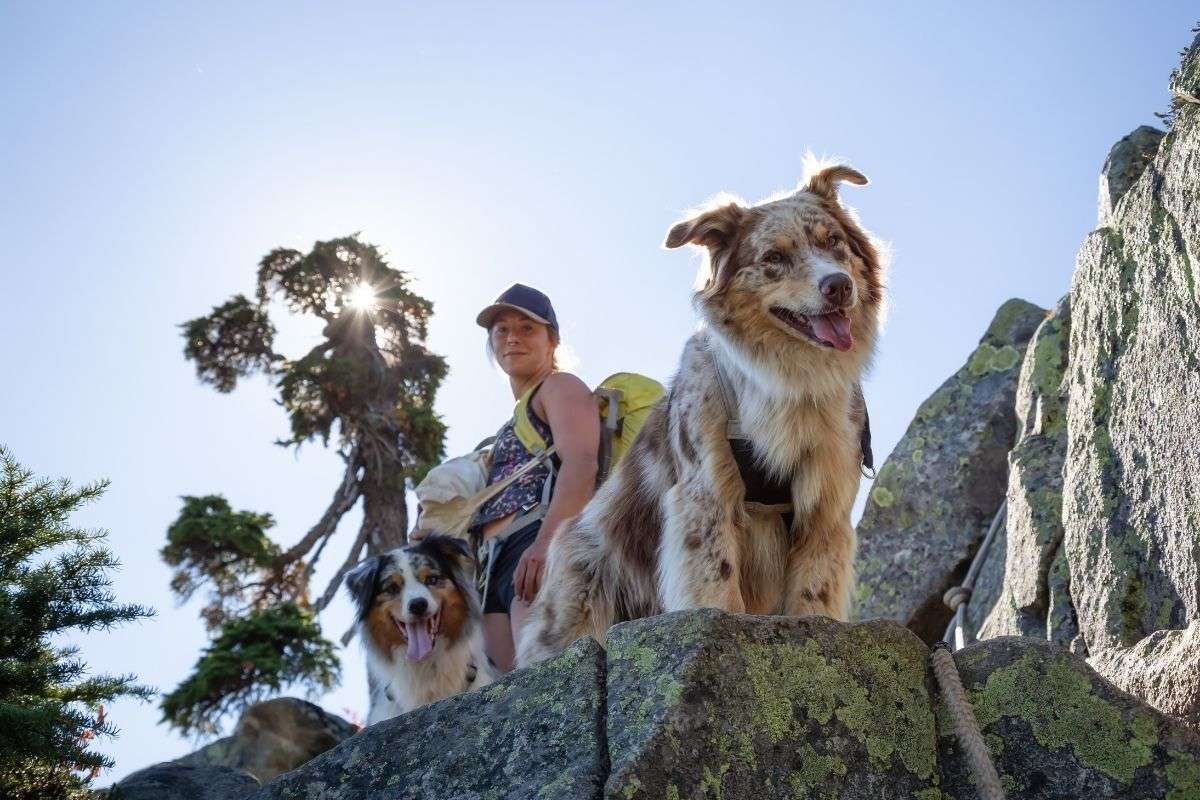
Going on an adventure doesn’t have an age limit, especially for people who are willing to go the extra mile to experience new things. However, this willingness may wane when you’ve only ever hiked with your pet that you’ve noticed has gotten older. Whether it’s your always-game Shiba Inu or your along-for-the-ride Beagle, your pup will eventually struggle to keep up with you on your hikes.
If you’ve noticed how their pace has slowed, or they’re not as active as when they were younger, then heed these reminders to make your hike safe and enjoyable for your older dogs:
- Prepare well – Make sure you don’t shock your senior dog by taking them on a difficult hike early on. Get them used to easier trails first. Pay attention to any stiffness in their gait and have it looked at by your vet. It could also help to give your senior dog supplements to help with mobility. Set shorter hikes because long, strenuous ones might be too much for older dogs.
- Let them set the pace – Your older pet may not have the same energy as before, making it crucial for you to let them walk at their own pace. Don’t hurry them along the hiking trail to avoid fatigue.
- Give them an ample amount of breaks – If you notice that your pet is tired, don’t push them to finish the trail. Allow an ample number of short breaks during the hike to give your pets time to rest. 4. Don’t let them get dehydrated – Pack enough water for you and your older pet, (you don’t want them drinking hot spring water), especially if you’re planning on hiking in the summer. Give them access to fresh, clean water to keep them hydrated all throughout the hike.
Using Dog Booties
Submitted by Jordan of The Homebody Tourist

Dog booties are not for every pup, BUT they have significantly helped our German Shepherd, Thor, enjoy hiking much more! Before we started using them, his paws would be SO cut up from the sharp rocks and rough terrain. It was to the point where he would barely walk the following day.
Aside from protecting your pup’s paws from cuts, dog booties are also great for hot, cold, and icy trails. I do recommend testing out your dog’s hiking boots before going on a long hike as your dog will likely not feel comfortable in them at first. Although Thor does walk a bit funny at first, after a few steps on the trail, he forgets they are even there!
Hiking with dogs can be such a fun experience as long as you make sure your dog is safe, prepared, and comfortable!
These are just some tips from experienced hikers when it comes to hiking with dogs. Remember, dog owners become doggie ambassadors every time they are on a hike so it is important to respect the trail and other hikers so everyone has a lot more outdoor adventures to enjoy!
Which hikes have you and your dog enjoyed? Join us on one of our upcoming trips to discover more hikes you can take your dog on!


